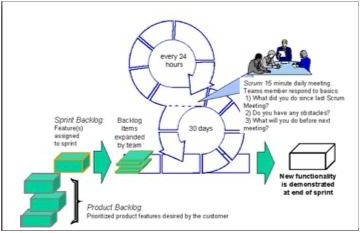Increase Project Success by Using Story Points
A Simple Scrum Story Point Example
Scrum Methodology allows for projects to be streamlined and promotes open communication between project team members. A major component of the scrum process is story points. Story points are a way of measuring the scale and intricacy of a user story (a software system feature specified by the customer) or a project.
Story points are assigned to the tasks that are listed on the backlog, and are determined by the project team. Some teams use simple methods like “rock - paper - scissors” to come up with their measurements, while others use more complex methods. Each team sets forth a number for each task in relation to the other tasks on the backlog. For example, if you use the T-shirt as an analogy and use 1 to 10 as your values, then you can say that an extra-large T-shirt is a 10 while an extra-small T-shirt is a 1. A medium T-shirt would be assigned a five since it is the middle of all the sizes. When using this analogy, a project with a value of one would be a fairly straightforward, easy project while a 10 would be a more complicated project.
These relative terms correspond more to the size and difficulty of a problem, not to the duration. Since the measures are relative, one programmer could do a 10-value project in six days, but another may take 12 days with the same project.
More than likely, when each team member comes up with a value, there will be a few differing views. While it is tempting to defer to the lead person when assigning story points, a discussion is needed to hear the reasoning behind the values. The discussions surrounding story points can help members from various disciplines act more like a cohesive whole rather than disparate team members from different departments. These discussions are done until a single value can be agreed on. Again, story points do not relate to time, only the absolute size of a user story.
Story Point Taskboard

Using story points to estimate the values of projects can lead to pretty accurate predictions of when a project can be completed. If you work with the same team, you know how long it takes them to finish a project based on its predetermined story points. If a story point valued at 1 takes 2 days and a story point value of 10 takes 2 weeks, you can add up the story points assigned to each feature to estimate how many days or weeks it will take to finish the project. If you’re unfamiliar with your team, it could take a few Sprints to see how many story points the team can accomplish per Sprint.
Velocity can be calculated from story points. Velocity measures how much the team can accomplish during a certain timeframe. The size of the project is divided by the velocity of the team. This will lead to an approximate number of iterations to be accomplished. Then, the length of time until completion can then be estimated.
Story points are a quick and comparatively easy way to measure the size and difficulty of a project. Although, it must be remembered that story points correspond to the team using them and must be agreed on by the team. Since most humans think about things relatively as opposed to absolutely, story points make it easier to break up and digest elaborate projects.
